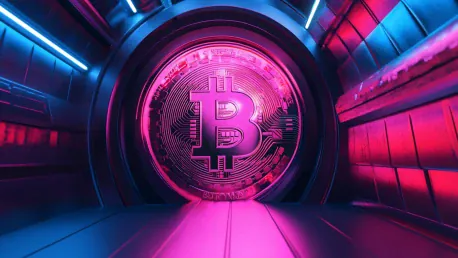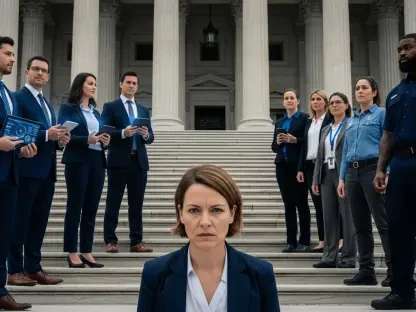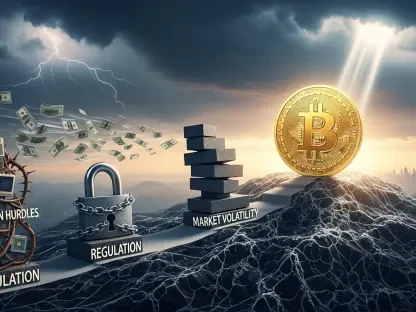In a significant move that has left the investment community abuzz, President Trump recently formalized the establishment of national cryptocurrency reserves. Announced during the inaugural White House cryptocurrency summit, these reserves include the Strategic Bitcoin Reserve (SBR) and the US Digital Asset Stockpile (DAS), each aimed at managing different types of cryptocurrencies. The initial impact of this policy has led to varied reactions from investors, fueling debates about its long-term implications. The initial announcement caused a notable stir in the market, with Bitcoin dropping 12% in value due to investors’ concerns over the new policy’s potential effects.
Immediate Market Reactions
President Trump’s announcement that the United States would hold a formal reserve of cryptocurrencies, particularly Bitcoin, led to immediate market turbulence. Bitcoin’s value plummeted by 12% as investors, anxious about the new policy’s implications, sold off their holdings. The Trump administration claims the reserves will bring stability, but the short-term market response has been marked by significant selloffs and volatility. In contrast to the administration’s optimistic outlook, many investors have responded to the announcement with caution, moving their assets into stablecoins pegged to fiat currencies.
The market reaction highlighted a lack of confidence in the new policy, despite promises to streamline and maximize the value of government-held cryptos. Stablecoins saw a $12.3 billion surge in value during February as investors sought safer harbors amid the perceived instability. These moves underline the investment community’s wariness and the broader skepticism surrounding the actual impact and efficiency of these reserves. The fluctuating market evokes a broader sentiment among investors about the inherent uncertainties in the evolving landscape of digital assets and governmental involvement.
Strategic Intent and Government Oversight
The executive order aims to centralize the handling of cryptocurrencies across US government departments, a move intended to rectify over $27 billion in losses from inconsistent crypto management. The Strategic Bitcoin Reserve will consolidate all Bitcoins currently held by various government entities. The US Digital Asset Stockpile will manage a diverse range of cryptocurrencies but will not introduce new asset purchases. Centralizing the management of these digital assets aims to create a more orderly and efficient approach, ensuring that the government’s cryptocurrency holdings are maximized for strategic benefit.
David Sacks, the White House’s appointed crypto czar, reassured that while government agencies can purchase more cryptocurrencies, these actions must incur no additional costs to taxpayers. The administration’s depiction of the policy as a strategic harnessing of digital assets for national prosperity has met with mixed reactions from the crypto community. While the centralized management approach is touted as a significant step forward, the practical implications and the potential for effective implementation remain key points of consideration.
Investor Skepticism and Concerns
Crypto enthusiasts and investors, skeptical of the policy’s immediate value, have voiced concerns. Kai Wawrzinek, co-founder of Impossible Cloud Network, criticized the lack of plans to buy additional coins and the stipulation of no taxpayer funding, rendering the reserves’ strategic value questionable. The overwhelming perception among investors is that the policy, while well-intended, delivers minimal substantive impact in its current form. Wawrzinek’s remarks underscore a common sentiment that the reserves might fall short of their intended goals without further investment and clarity.
As reactions from the crypto community continue to be mixed, the policy’s effect on broader market dynamics remains to be seen. Prominent figures in the industry, like Nigel Green from deVere Group, suggest that such measures may eventually lead to greater regulatory clarity, potentially enhancing institutional investors’ confidence in digital assets. However, the initial response indicates a degree of skepticism and uncertainty about the policy’s immediate efficacy and long-term benefits, reflecting a cautious approach from many within the cryptocurrency sphere.
Broader Implications and State-Level Adoption
In a significant move that has left the investment community buzzing, President Trump has recently formalized the creation of national cryptocurrency reserves. This major step was announced during the inaugural White House cryptocurrency summit. The reserves consist of the Strategic Bitcoin Reserve (SBR) and the US Digital Asset Stockpile (DAS), each designed to oversee different types of cryptocurrencies. This new policy has spurred varied reactions from investors, igniting debates about long-term implications. The announcement initially caused quite a stir in the market, with Bitcoin’s value plunging by 12% due to concerns about the potential effects of this policy. Investors are worried about the government’s intervention and its impact on the cryptocurrency landscape. While some view the reserves as a necessary move for economic stability, others fear it may stifle innovation and freedom in the crypto market. The debate continues to rage, highlighting the intense interest and divergent opinions surrounding this groundbreaking initiative.









